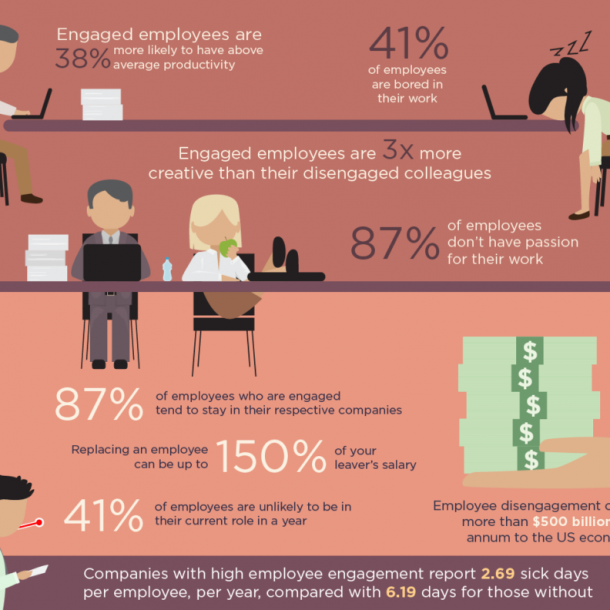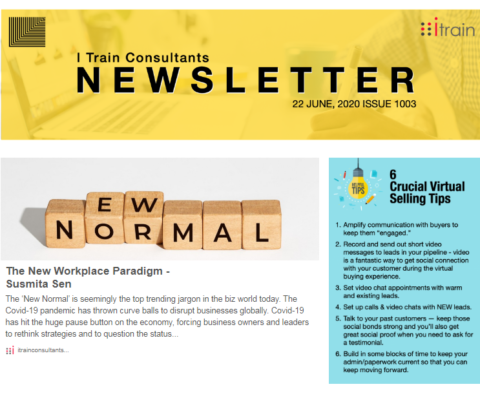
The ‘New Normal’ is seemingly the top trending jargon in the biz world today. The Covid-19 pandemic has thrown curve balls to disrupt businesses globally. Covid-19 has hit the huge pause button on the economy, forcing business owners and leaders to rethink strategies and to question the status quo. As the virus demonstrates it’s resilience with no signs of the curve flattening, it is time to tide over the crisis with concerted planning and agility to course correct all along.
Hence, the genesis of the ‘New Normal’- a concept enunciating a paradigm shift in the way organizational ecosystems operated in the recent past; thereby architecting designs for the ‘Future of Work’. Some emerging trends, as companies have, by chance or by choice, shifted to adaptable models of survival, in responding to the crisis are highlighted as:
– Billions of dollar worth of investments being built into organization budgets, to accelerate their digitization journey
– Upskilling and re-skilling of talent taking a centre-stage in the priority matrix
– Critical skills being recognized for driving the businesses- an amalgam of permanent and gig staff
– Leaders more accepting of their limitations and lack of knowledge in dealing with fresh complexities and challenges thrown their way
– Organisations moving towards flatter structures, hybrid decision models
– Emotional well- being, last but by no means the least critical, in the charter of priority
And so the ‘new normal’ seems to be an attempt to bring some method to the madness, some disciplines to arrest the invading uncertainty and conundrum. Let’s unravel some of the tactical shifts in workplaces in minutia
1. Digital Transformation– About a year ago, about 70% organizations had devised small or large- scale digital interventions to stay ahead of the curve. As remote working and contactless transactions become the guiding principles for a workplace, firms are left with no choice but to take the plunge. Collaborative office, video conferencing, customer support, remote management and service and other digital systems have gained popularity with their stocks skyrocketing overnight, bringing in huge relief to business continuity plans.
Managing productivity was one of the key concerns of many leaders with the migration to ‘work from home’. Functional digital platforms have come to the rescue to ensure seamless and secure remote engagements with peers and customers. Cloud computing has enabled organizations to scale up their offerings and also catapult the whole customer experience by monitoring their journey across the various digital touchpoints of websites, apps, social media etc. The point being made here is that the needs and the drivers would be varying; and hence businesses would need to be prudent in evaluating their digital readiness in alignment with their strategic priorities, to identify what is best suited for their growth. The focus should not be myopic, to just tide over the current crisis, but that which supports the business beyond.
2. Up-Skilling & Re-Skilling-This is an era marked by new technologies such as Big Data & Analytics, Cloud, Artificial Intelligence (AI), Internet of Things, Machine Learning, etc., which are disrupting markets and businesses, with a constant demand to innovate. McKinsey predicts that nearly half of the activities performed by workers today can be automated even now, displacing as much as 14% of the workforce. Gartner says, while AI is predicted to impact 1.8 million jobs, it will also create 2.3 million jobs by 2020.
The success of an organisation’s digital transformation journey is not limited to technology adoption and innovation, but how are individuals empowered and enabled to embrace this change. A winning digital strategy requires employees to have the right skill set to be agile and adaptive to ride the technology wave. It is therefore imperative to anticipate and prepare for future skills, such that man and machine can work side-by-side to stay relevant through this transformative journey.
There is already a deluge of content and courseware available across a plethora of learning platforms, for individuals to access and self- train themselves. A recent study by Accenture certifies that 5 lac of it’s staff members completed 70milion self- directed learning curriculum over a period of 3 years, reducing the training cost by 25% and adding the training hours by 40%. This is a brilliant exemplification of the direct impact technology can make. All HR teams will need to do, is rely on tools to run algorithms to throw up personalised results and share with employees curated learning programs that would be beneficial for each staff.
3. Identifying Critical Skills– The immense pressure on cost structures have already generated some decisions- on the identification of business- critical skills. The talent composition henceforth, in organizations, will be a potpourri of permanent staff, gig workers and automation tools. The ambiguous business environment with wavering skill demands, have compelled organizations to focus on flexible talent options. With remote working a growing reality, the opportunity is for organizations to tap the best-in-class talent sans boundaries and long term pay commitments. Access to the gig economy is also set to experience a further impetus with the proliferation in digital platforms and networks.
In India, women continue to be heavily underrepresented in the workforce. With the work from home as a default option, the opportunity is also to potentially tap the women professionals, favoring the advocacy on the diversity agenda.
4. Leadership Dilemma– Leadership quandary in these unprecedented times cannot be undermined, as they continue to operate in mission critical mode, languishing under the burden of expectations, to ensure the organization does continue to thrive. Covid-19 has introduced reality checks to disprove the relevance of knowledge and years of experience as the unfailing dictats to devising a winning narrative. It’s a black swan period, that is compelling leaders to challenge status quo and completely re-write the business playbook and experiment with models, with no time- tested scripts for success.
Leaders are therefore resorting to engaging with the teams to co-create plans. This is the only mantra that would build engagement, ownership and accountability in the teams while harnessing greater levels of trust and collaboration
5. Flattening structures– Infosys, like several other organizations, recognized the redundancy in many layers in the organization, with teams performing at their productive best during the recent ‘work from home’ phase, displaying minimal need for supervision. The time is opportune to de-layer and collapse the decision structures, to make the organization agile and advocate faster decisions in response to the dynamics of the macrocosm. This will propel leaders to empower their frontline staff and distribute and decentralize decision points, signifying the migration of digital assets on to the cloud for ease of access across the organization.
Hybrid decision making models will be in vogue, with man and machine partnering in this game together. AI and analytics running in the backdrop will be generating reams of structured and unstructured data, from e-mails, chatters, activity trends etc and throwing up patterns to facilitate proactive decisions from leaders. Decision making therefore will be data driven and real time, resting on a very strong cyber security backbone.
6. People and Culture– The pandemic has pushed people to be unapologetic about their choices- self- care and family over all else. The speed and pace of this radical change is sparked by fear and anxiety of the unknown proselytized by the looming uncertainty. The outcome is a huge trust deficit. Employees are therefore appreciative of all kinds of confidence building measures from their leaders.
Besides, the new ways of working, organizational ecosystems, automation of processes and changing customer preferences is bound to exercise it’s direct correlation on employee behaviour. This means innovative ways of managing teams, building engagement, measuring productivity, tracking outcomes, and addressing challenges in collaboration and technology. HR will assume a key role in driving employee behavior and be the custodians of shaping the organization culture. Leaders would need to keep their ears close to the ground, to hear every voice, to go beyond transactional obligations to understand and facilitate intrinsic needs and help create an inclusive, collaborative and rewarding working environment
The essence of adaptability is key here as leaders play a defining role in building empathy and keeping undeterred focus on people centricity. Juxtaposing the people factor to characterize the cultural nuances will be an enabler for employees to accept and embrace change, as we set foot at the threshold of an organizational metamorphosis- a new world of work awaits us!!
Guest Author: Susmita Sen
Head- HR Advisory – Sannam S4
https://www.linkedin.com/in/susmita-sen-15844a5/
Subscribe To Our Newsletter
Be part of our community and receive updates, best offers and freebies directly in your inbox.
Contoole
With over 15 years of experience and having catered to the learning needs of over 400+; we are committed to giving more Power to the Learners…
© 2022 Contoole.com. All Rights Reserved.

